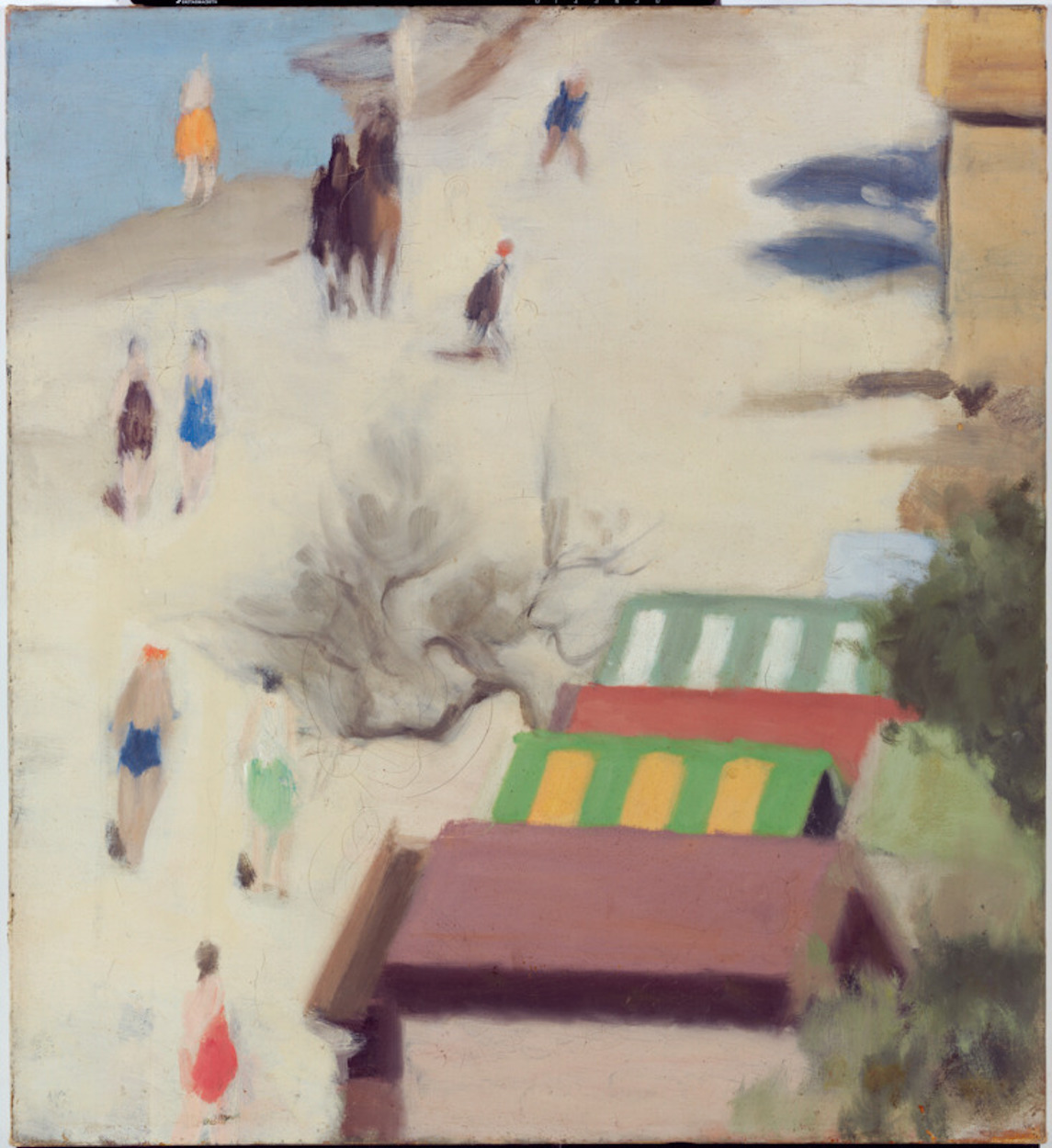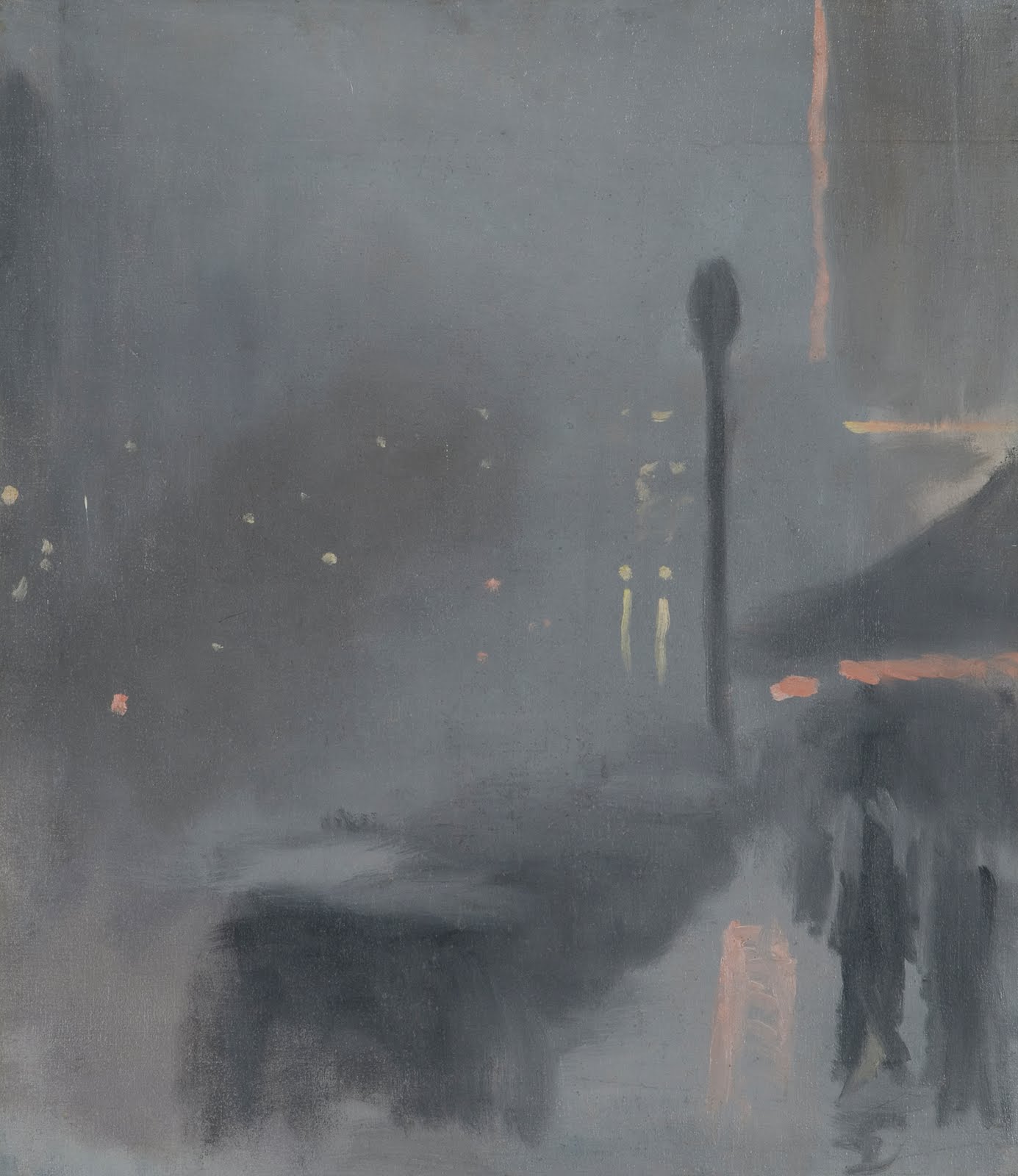Clarice Marjoribanks Beckett was an Australian artist and a key member of the Australian tonalist movement. Seldom signing or dating her works, Beckett sold few paintings during her lifetime and, as with many female artists, her work was treated with critical disdain by her male counterparts.
Brought up in a family that enjoyed a cultured and comfortable lifestyle, Beckett, as the dutiful unmarried daughter, was unable to concentrate solely on her painting but was obliged to care for aging parents. She had no dedicated studio and, in the early mornings or late evenings, wheeled her easel, brushes, and canvases in a small cart around the shoreline or cliffs near her home in Beaumaris. It was this passion for realism—painting outdoors—that, in 1935, contributed to her death from pneumonia after being soaked in a rainstorm while painting near her home.
Her evocative subject matter includes foggy suburban streetscapes that are either punctuated by the verticals of electric light poles or pierced by acid yellow headlights, and smoky sunsets that glow with reflections into the bay.
Sandringham Beach is one of the artist’s later works where she used a stronger palette to define the structural elements of bathing boxes, bathers, horses and riders, shadows, ocean, and vegetation shimmering and dissolving in the sunlight. In this painting, she seemed to move away from the impressionistic realism of the earlier works to experiment with elements of Modernism, by reducing the scene to its basic forms.
I love her works!
P.S. There's nothing better than a beachside vacation. Here are ten paintings that prove it's true.


 Clarice Beckett
Clarice Beckett